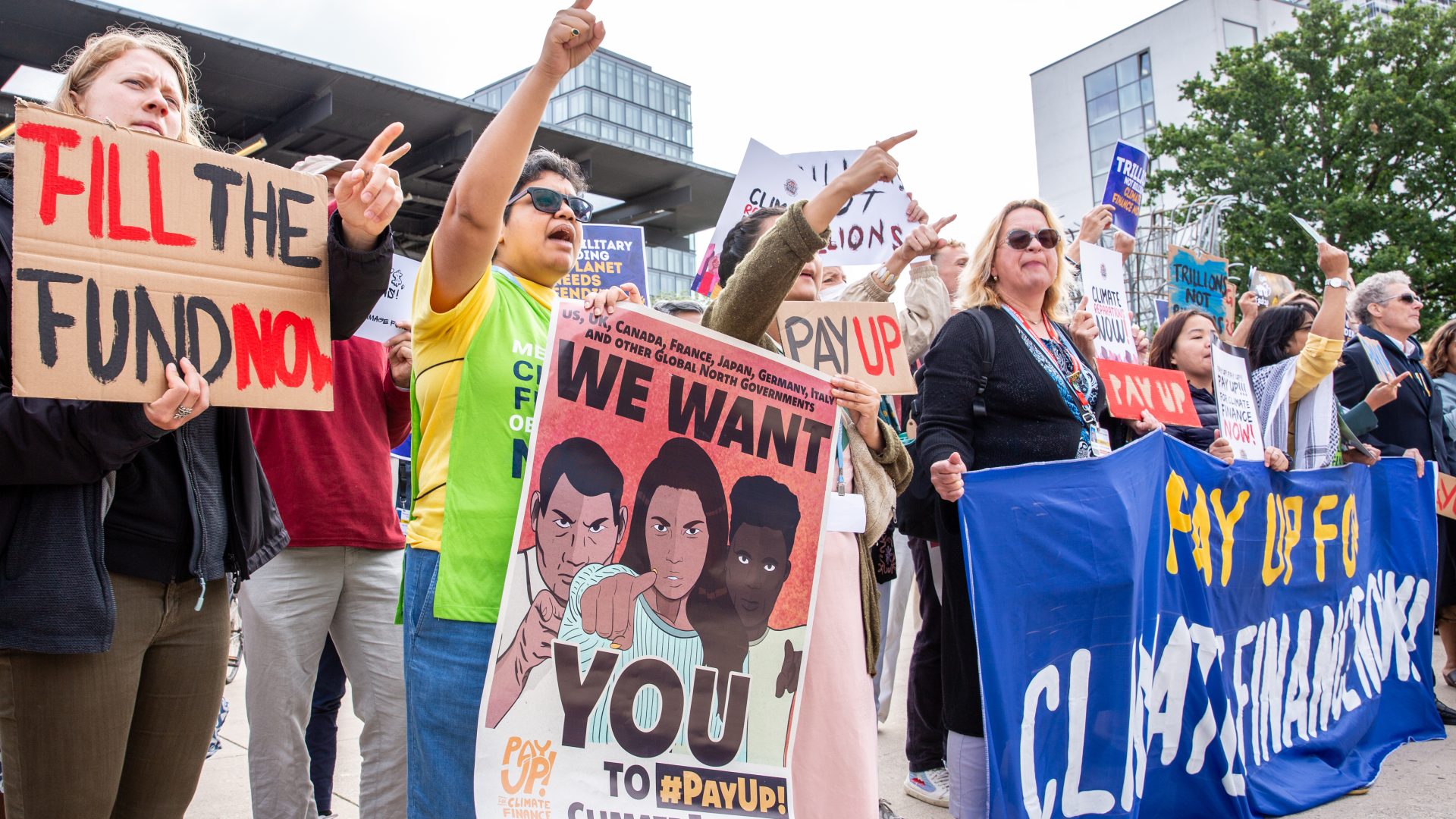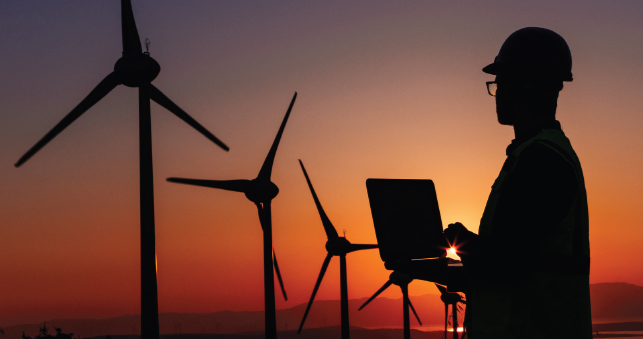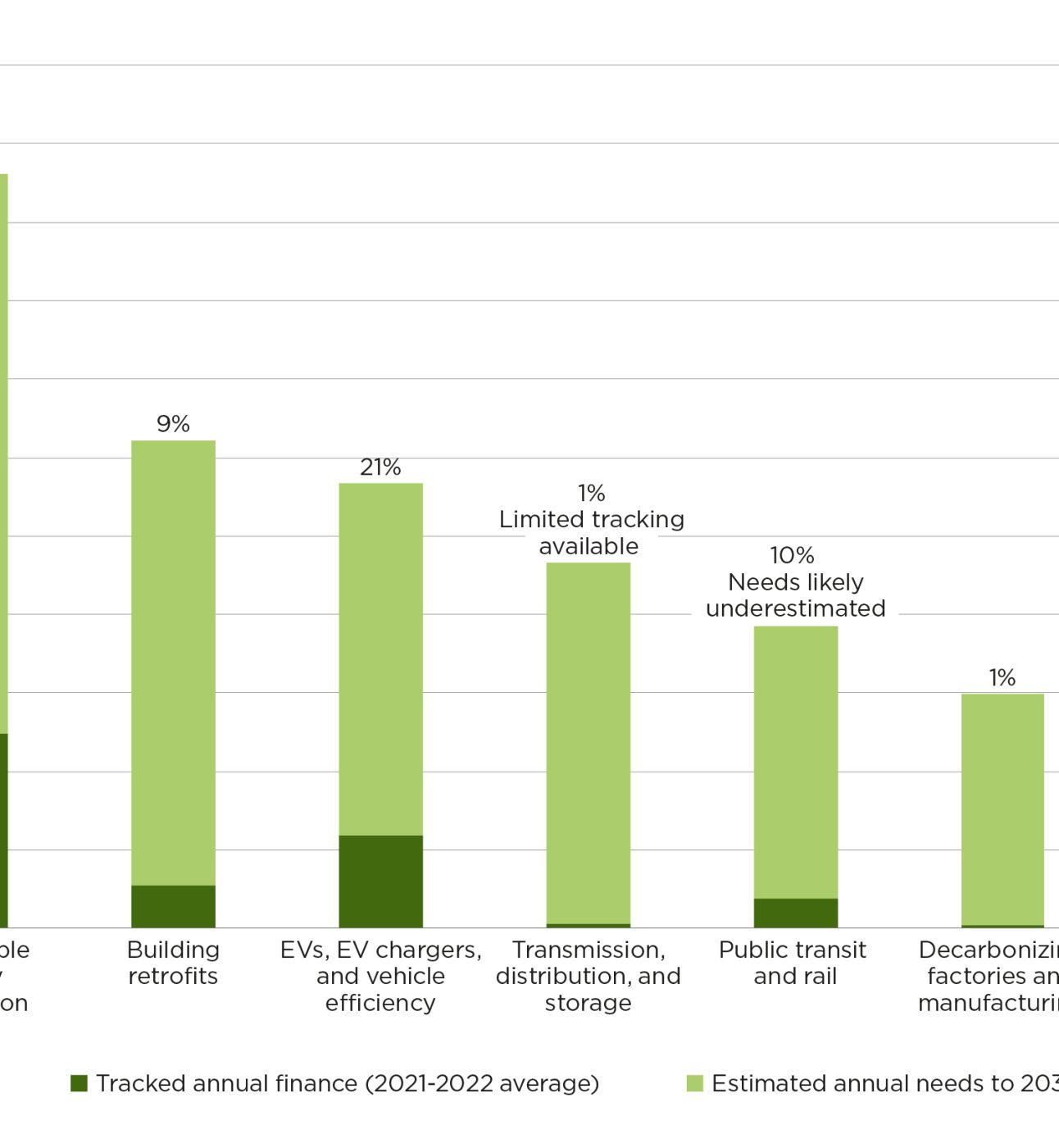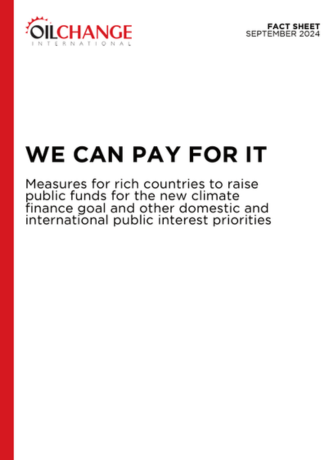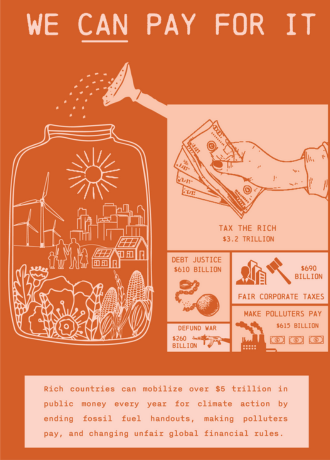Resources for COP29
Following the historic COP28 agreement to transition away from fossil fuels, COP29 stands as a crucial moment for turning commitments into action. The next key step to make good on this landmark energy agreement is rich countries agreeing to a new climate finance goal (NCQG) that makes rich countries pay the finance they owe to the Global South to make this possible. This will allow countries to deliver national climate plans (NDCs) due in 2025 that phase out fossil fuels.
Oil Change International analysis shows that:
- To save lives and avoid climate breakdown, at COP29 we need rich countries to agree to a new climate finance goal (NCQG) of at very least $1 trillion every year, with a mitigation subgoal of $300 billion annually.
- This needs to be made up of grant-based and highly concessional financing, not more harmful loans. From worker reskilling to public transit to energy access for vulnerable communities, many of the ingredients most critical for an energy transition cannot or should not be profit-making or left up to the market.
- There is no shortage of public money to do this. Rich countries have the means to mobilize well over $5 trillion a year for the NCQG and climate action at home, including by ending fossil fuel handouts, taxing the super-rich, and changing unfair global financial rules.
- A private finance focused ‘investment’ target is not a viable replacement for this. The last two decades of international climate finance initiatives show this approach cannot deliver the scale, distribution, or quality of finance needed for just energy transition.
- To fill finance gaps, rich countries are arguing that each dollar of subsidized public finance can attract $5 to $7 dollars of private finance for just energy transition. However, our real-world data shows on average it has brought in just 85 cents.

